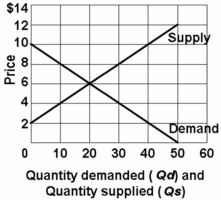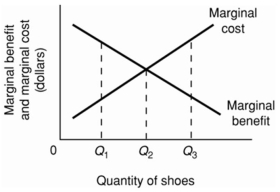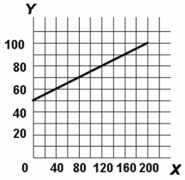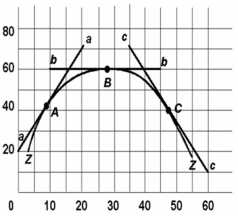A) 6 units of consumer goods
B) 7 units of consumer goods
C) 15 units of consumer goods
D) 22 units of consumer goods
F) All of the above
Correct Answer

verified
Correct Answer
verified
Multiple Choice
 -Refer to the above diagram. An improvement in technology will:
-Refer to the above diagram. An improvement in technology will:
A) shift the production possibilities curve from PP1 to PP2.
B) shift the production possibilities curve from PP2 to PP1.
C) move the economy from A to C along PP1.
D) move the economy from A, B, or C on PP1 to D
F) B) and D)
Correct Answer

verified
Correct Answer
verified
True/False
Purposeful behaviour implies that everyone will make identical choices.
B) False
Correct Answer

verified
Correct Answer
verified
Multiple Choice
Microeconomics is concerned with:
A) the aggregate or total levels of income, employment, and output.
B) a detailed examination of specific economic units which comprise the economic system.
C) the concealing of detailed information about specific segments of the economy.
D) the establishing of an overall view of the operation of the economic system.
F) All of the above
Correct Answer

verified
Correct Answer
verified
True/False
Individuals face an economic problem but not the society.
B) False
Correct Answer

verified
Correct Answer
verified
Multiple Choice
 -Refer to the above graph. Which of the following statements is correct?
-Refer to the above graph. Which of the following statements is correct?
A) Quantity demanded and quantity supplied are independent of price.
B) Price and quantity demanded are directly related.
C) Price and quantity supplied are directly related.
D) Price and quantity supplied are inversely related.
F) B) and C)
Correct Answer

verified
Correct Answer
verified
Multiple Choice
 -Recessions are typically characterised by points:
-Recessions are typically characterised by points:
A) inside the production possibilities curve.
B) outside the production possibilities curve.
C) on the production possibilities curve.
D) that are not attainable on the production possibilities curve.
F) B) and C)
Correct Answer

verified
Correct Answer
verified
Multiple Choice
The global financial crisis that spread to Canada in late 2008 has been dubbed:
A) The housing bubble crash
B) The great financial crisis
C) The great recession
D) The great depression
F) A) and D)
Correct Answer

verified
Correct Answer
verified
Multiple Choice
 -Refer to the above diagram. If society is currently producing 9 units of bicycles and 4 units of computers and it now decides to increase computer output to 6, the cost:
-Refer to the above diagram. If society is currently producing 9 units of bicycles and 4 units of computers and it now decides to increase computer output to 6, the cost:
A) will be 4 units of bicycles.
B) will be 2 units of bicycles.
C) will be zero because unemployed resources are available.
D) of doing so cannot be determined from the information given.
F) All of the above
Correct Answer

verified
Correct Answer
verified
Multiple Choice
Which of the following is associated with macroeconomics?
A) an examination of the incomes of the University of Toronto Business School graduates
B) an empirical investigation of the general price level and unemployment rates in the 2000s
C) a study of the trend of pecan prices since World War II
D) a case study of pricing and production in the textbook industry
F) B) and D)
Correct Answer

verified
Correct Answer
verified
Multiple Choice
From the perspective of economists, which term provides the highest degree of confidence for explaining economic behaviour?
A) an economic principle or a law
B) a fact
C) a hypothesis
D) an assumption
F) A) and C)
Correct Answer

verified
Correct Answer
verified
Multiple Choice
In drawing the production possibilities curve we assume that:
A) technology is fixed.
B) unemployment exists.
C) economic resources are unlimited.
D) wants are limited.
F) B) and D)
Correct Answer

verified
Correct Answer
verified
Multiple Choice
Assume that if the interest rate that businesses must pay to borrow funds were 20 percent, it would be unprofitable for businesses to invest in new machinery and equipment so that investment would be zero. But if the interest rate were 16 percent, businesses would find it profitable to invest $10 billion. If the interest rate were 12 percent, $20 billion would be invested. Assume that total investment continues to increase by $10 billion for each successive 4 percentage point decline in the interest rate.
-Refer to the above information. Which of the following is the correct graphical presentation of the indicated relationship? 
A) line 4
B) line 3
C) line 2
D) line 1
F) None of the above
Correct Answer

verified
Correct Answer
verified
Multiple Choice
 -Refer to the above diagram. The slope of the line:
-Refer to the above diagram. The slope of the line:
A) is - 1/4.
B) is + 1/4.
C) is .40.
D) cannot be determined from the information given.
F) None of the above
Correct Answer

verified
Correct Answer
verified
Multiple Choice
Which of the following will not shift a nation's production possibilities curve?
A) the acquisition of more education and training by its labour force
B) the widespread application of irrigation to its agricultural land
C) an increase in the rate of unemployment
D) the discovery of new super-conductivity materials which makes manufacturing more efficient
F) A) and D)
Correct Answer

verified
Correct Answer
verified
Multiple Choice
Production possibilities tables for two countries, North Cantina and South Cantina:
North Cantina Production possibilities (alternatives)
 South Cantina Production possibilities (alternatives)
South Cantina Production possibilities (alternatives)
 -Assume that a change in government policy results in the increased production of both consumer goods and investment goods. It can be concluded that:
-Assume that a change in government policy results in the increased production of both consumer goods and investment goods. It can be concluded that:
A) the economy was suffering from unemployment and/or the inefficient use of resources before the policy change.
B) the economy's production possibilities curve has been shifted to the left as a result of the policy decision.
C) this economy's production possibilities curve is convex (bowed inward) as viewed from the origin.
D) the law of increasing opportunity costs does not apply in this society.
F) A) and C)
Correct Answer

verified
Correct Answer
verified
Multiple Choice
 -Refer to the above diagram. The slope of curve ZZ at point B is:
-Refer to the above diagram. The slope of curve ZZ at point B is:
A) infinity.
B) zero.
C) one.
D) none of the above.
F) A) and B)
Correct Answer

verified
Correct Answer
verified
Multiple Choice
Assume an economy is incurring unemployment and failing to realize least-cost production. The immediate effect of resolving these problems will be to:
A) move the level of actual output closer to the economy's production possibilities curve.
B) create a less equal distribution of income.
C) shift its production possibilities curve to the left.
D) shift its production possibilities curve to the right.
F) B) and C)
Correct Answer

verified
Correct Answer
verified
Multiple Choice
The main function of the entrepreneur is to:
A) make routine pricing decisions.
B) innovate.
C) purchase capital.
D) create market demand.
F) A) and C)
Correct Answer

verified
Correct Answer
verified
Multiple Choice
A country can achieve some combination of goods outside its production possibilities curve by:
A) idling some of its resources.
B) specializing and engaging in international trade.
C) buying the debt (bonds and stocks) of foreign nations.
D) producing more consumption goods and fewer capital goods.
F) None of the above
Correct Answer

verified
Correct Answer
verified
Showing 41 - 60 of 261
Related Exams